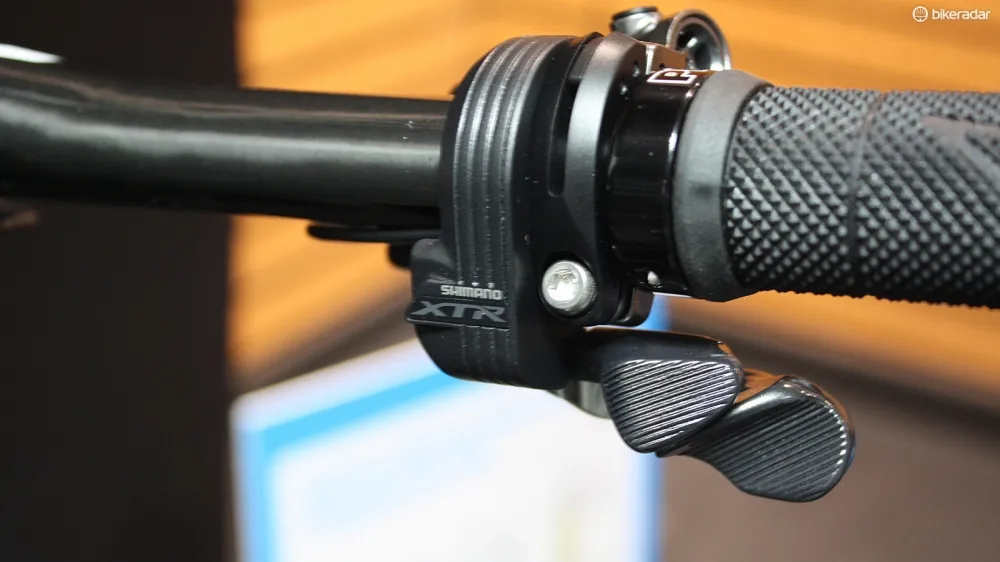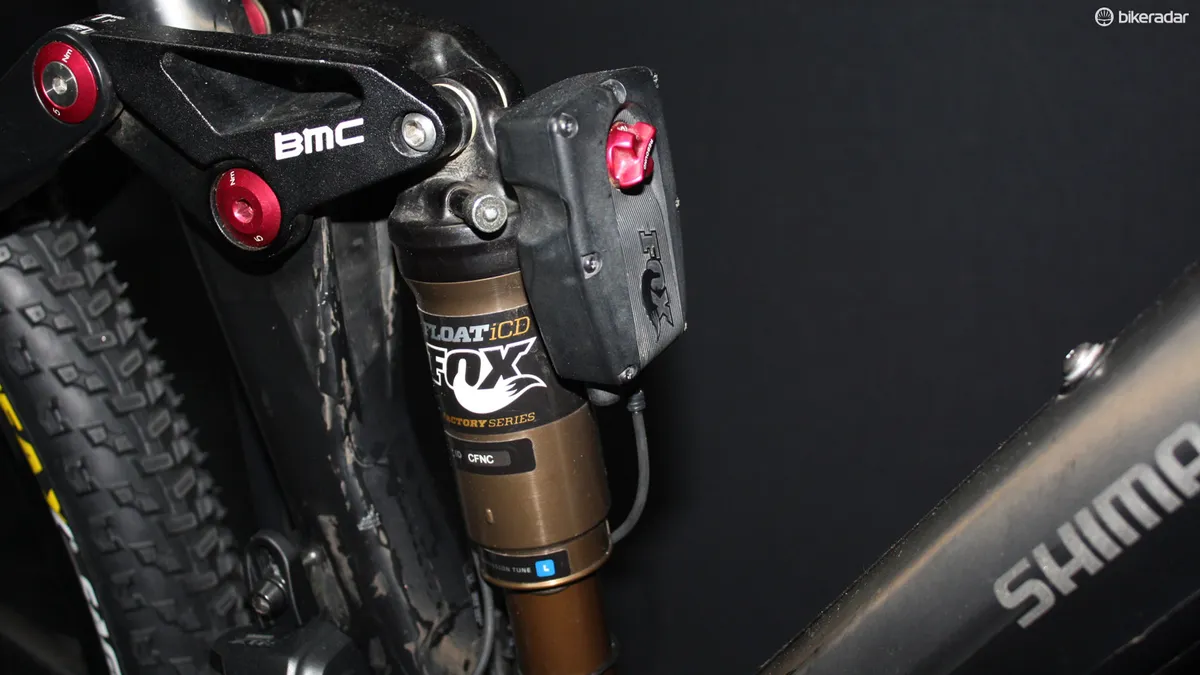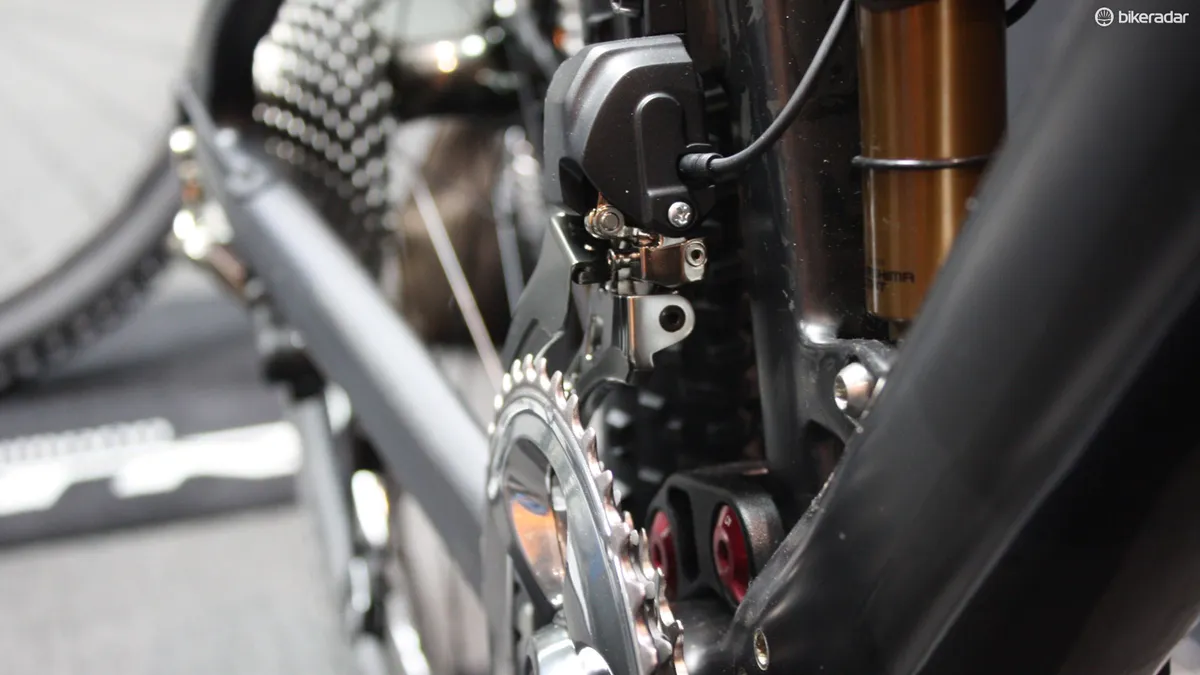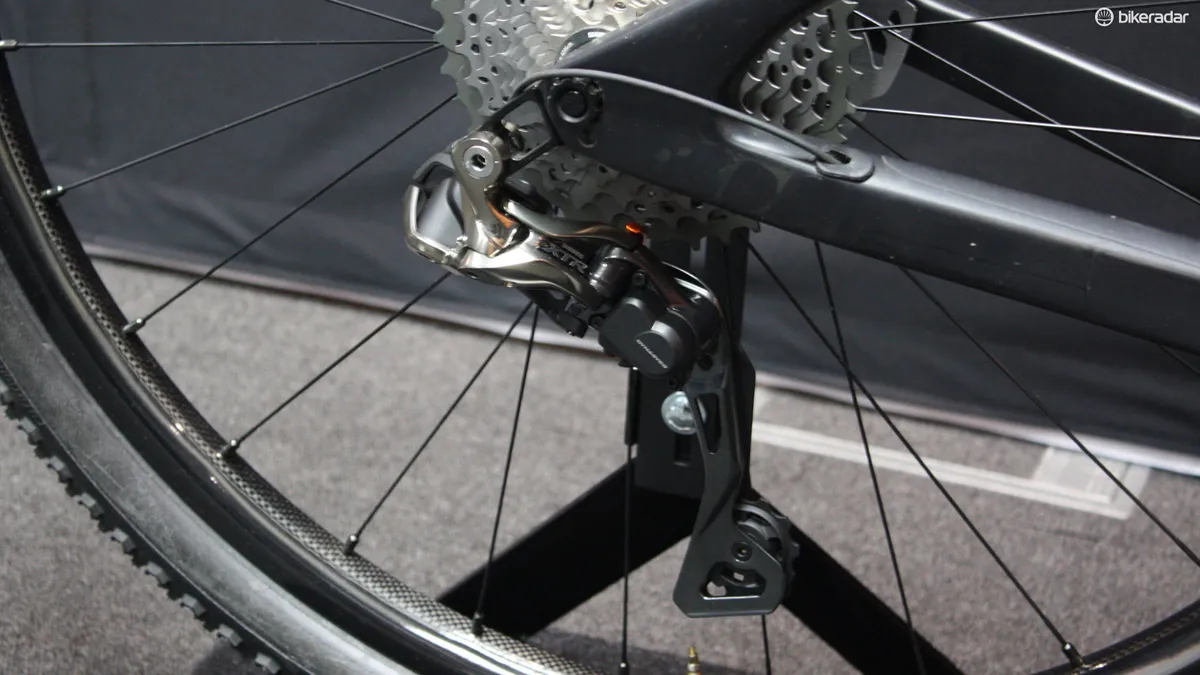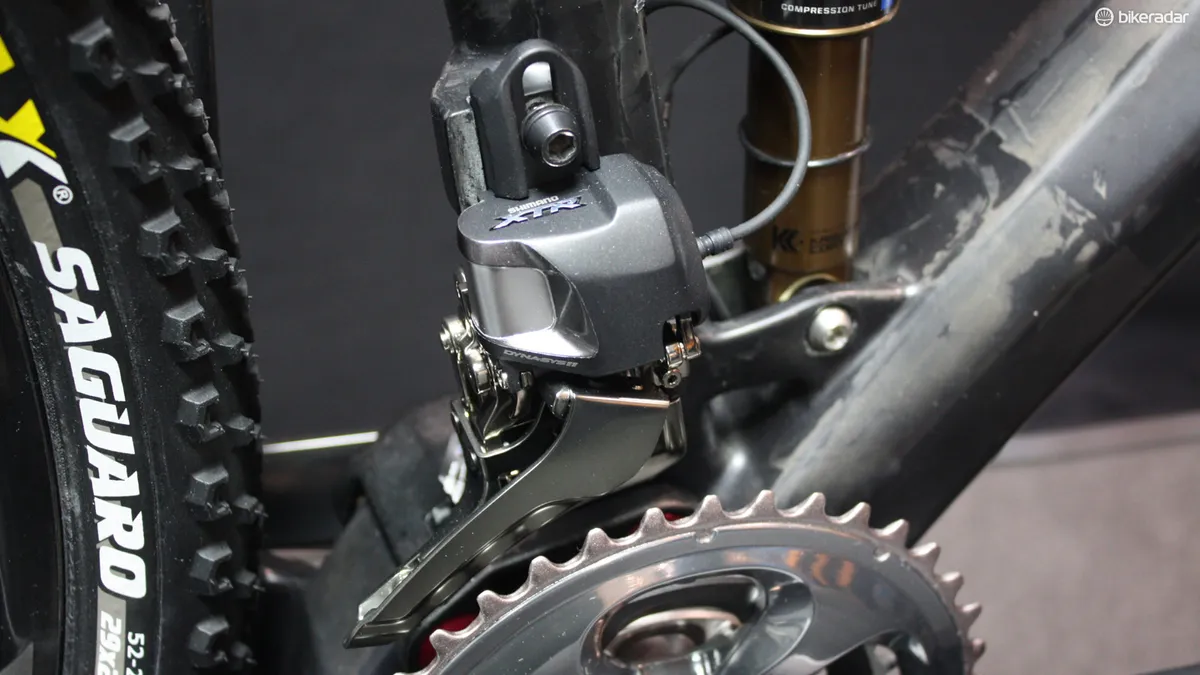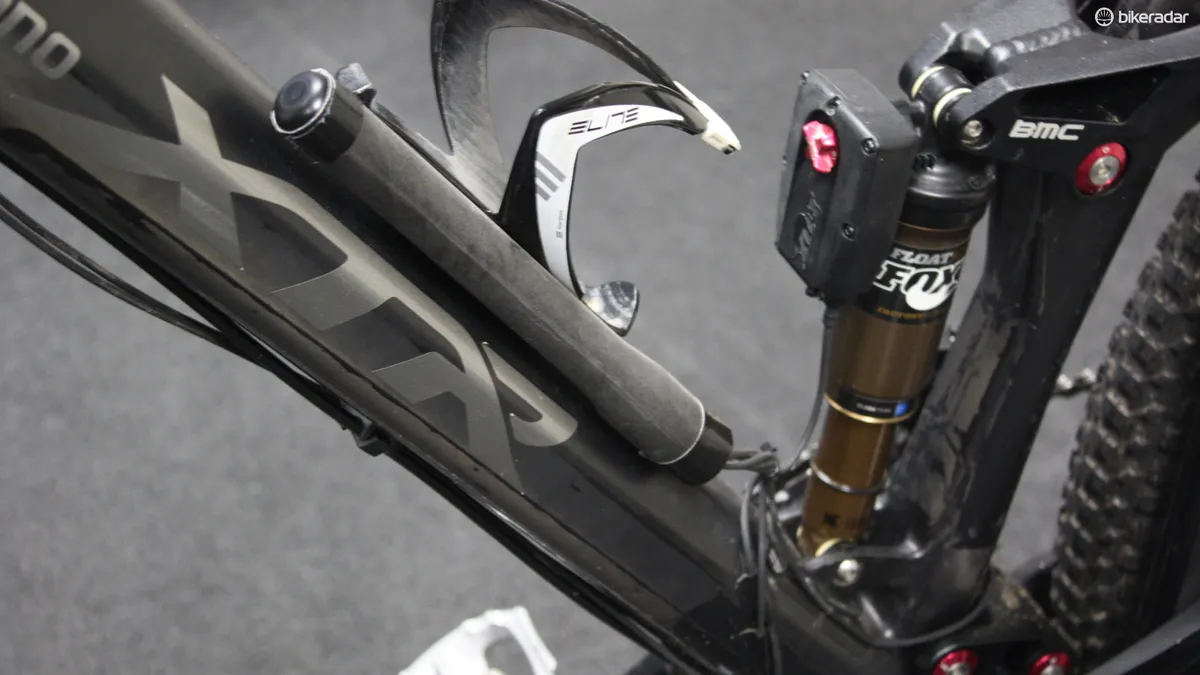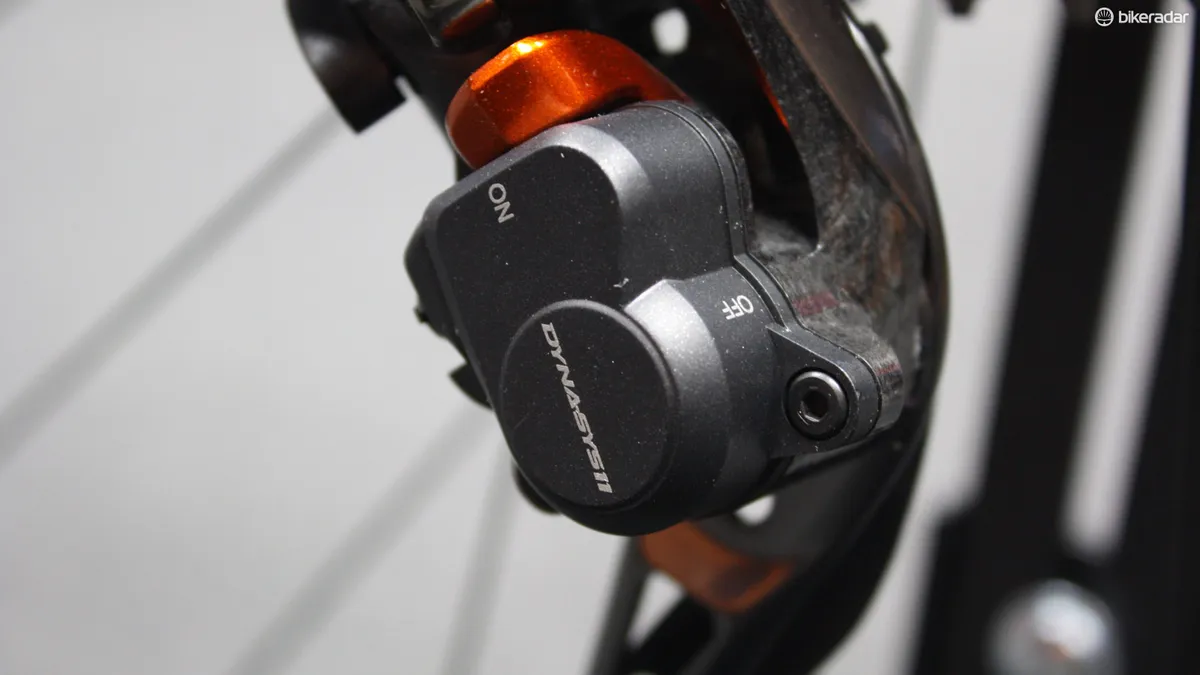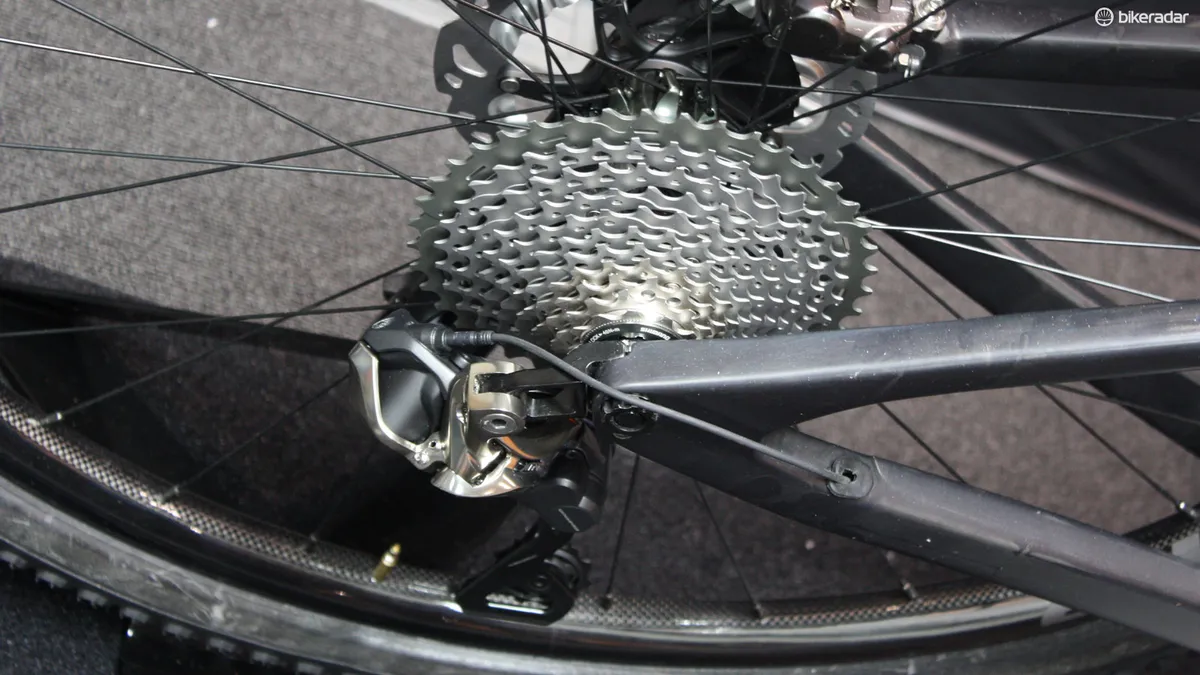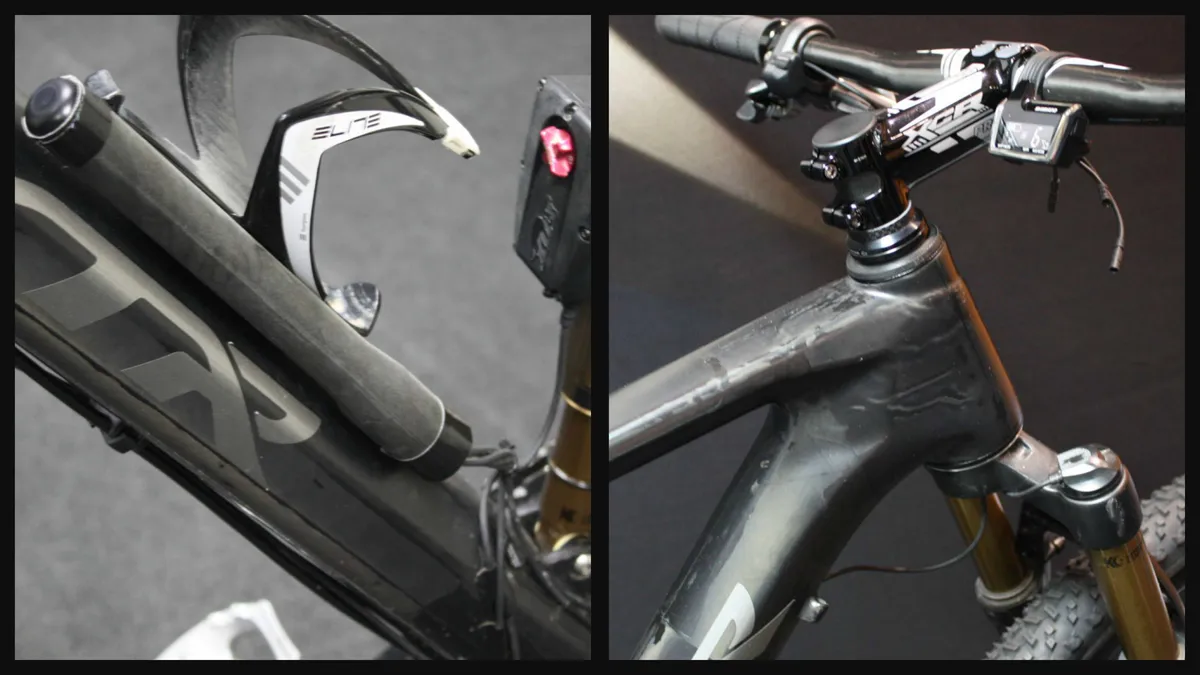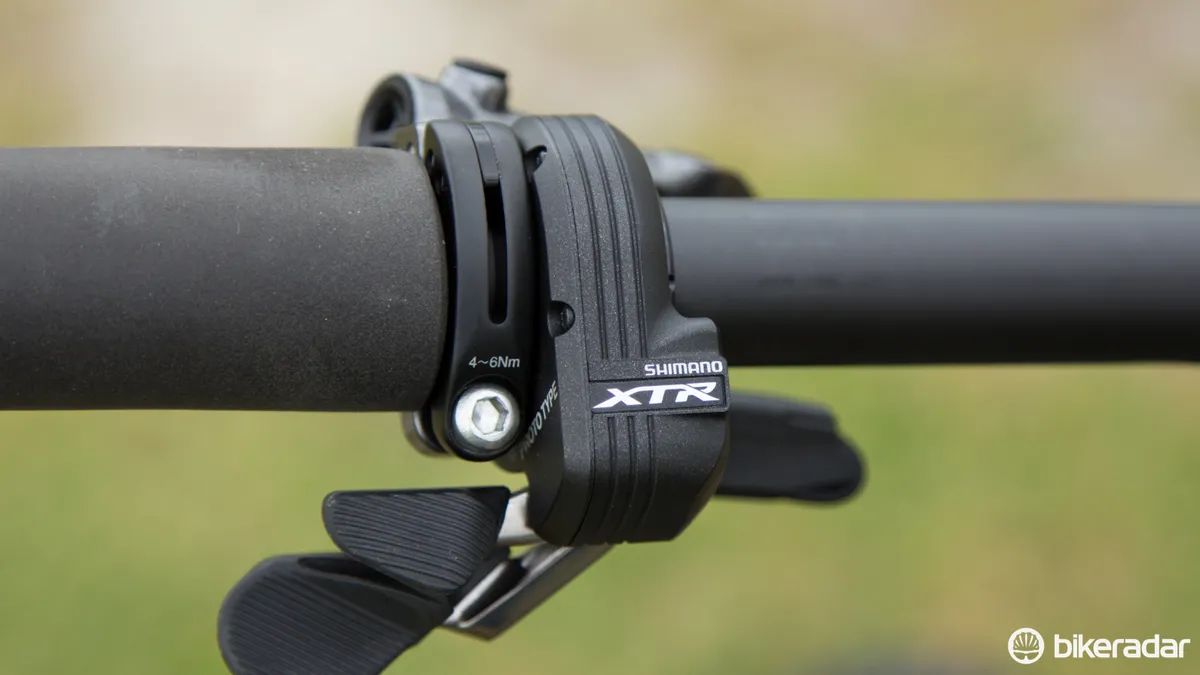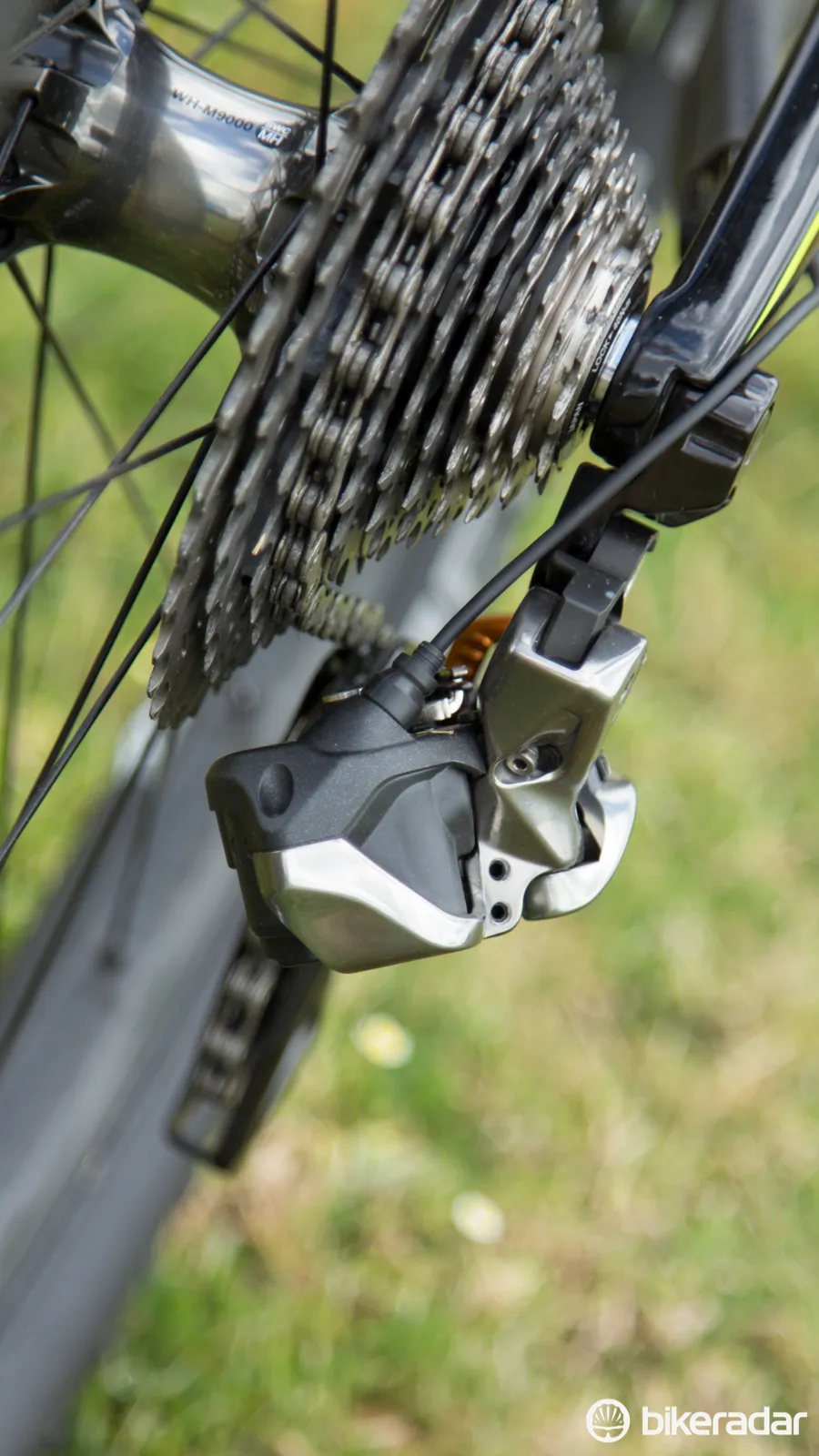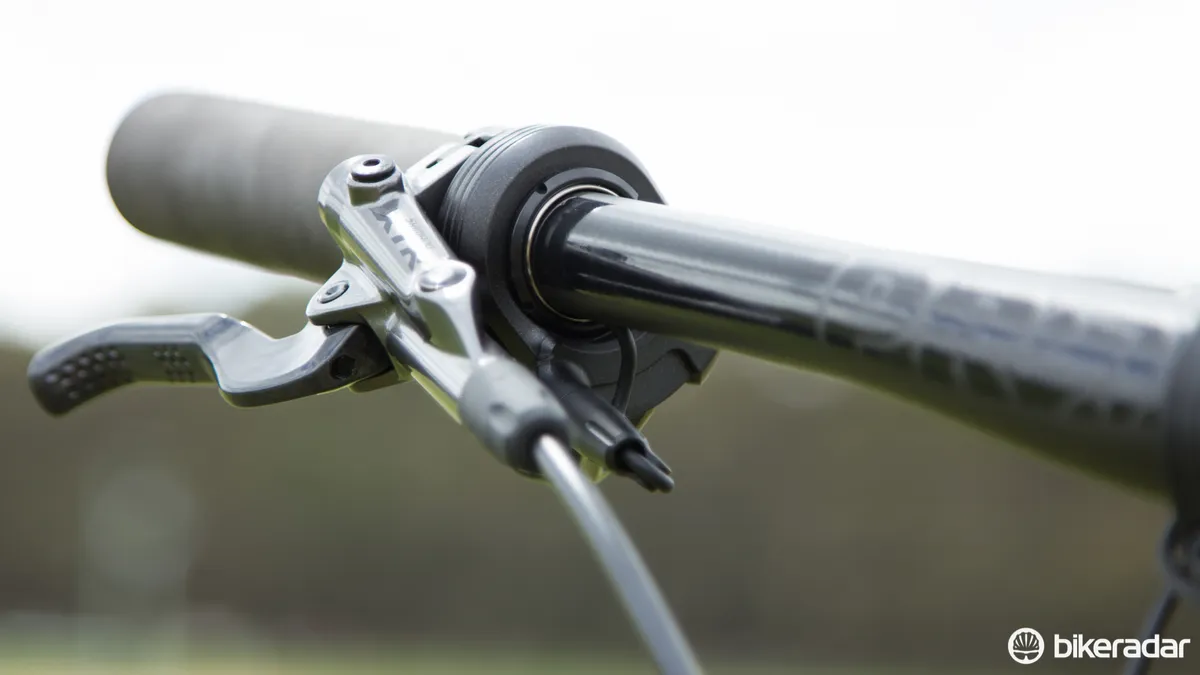Shimano today announced details of a new Di2 electronic version of its top-tier XTR mountain bike groupset.
Rumours, as well as leaked images of the group, have been floating around the net for some time, but now everything is official we can give you the full run-down.
Note: This article was originally published May 30, 2014. It was last updated October 27 with latest information following an XTR press-camp at the Cape to Cape mountain bike race in Australia. We're told the groupset will start to reach stores from December 2014.
XTR Di2 in a nutshell
XTR M9050 marks the first migration of electronic shifting technology into the world of mountain bikes. The system will use one battery and remain wired, using already proven parts from Shimano’s Ultegra and Dura-Ace road Di2 groups.
Nill
Jon Woodhouse and Tom Marvin from What Mountain Bike magazine discuss the brand new Shimano XTR Di2 groupset
So what are the advantages? Shimano claims that XTR Di2 will offer faster and more accurate shifting. Also, with no cables to stretch, it’s said to offer shifting consistency that a mechanical transmission cannot match. Whether that's true remains to be seen, but one part of XTR Di2 that we really should be taking notice of is Syncro Shift – for those who are running double or triple set-ups it could be a game changer.
Syncro Shift allows the rider to control both front and rear derailleurs with one shifter. Simply shift up or down and the transmission will follow a pre-programmed (and customisable) shifting map, moving both derailleurs when necessary to find the next ratio while maintaining a good chain line. So, that’s less clutter at the bar and more time to worry about things other than gear selection.
XTR Di2 shares its crank, cassette and chain with Shimano’s recently announced mechanical XTR M9000 groupset, so that means Di2 options for single, double and triple transmissions.
Individual components
RD-M9050 rear derailleur
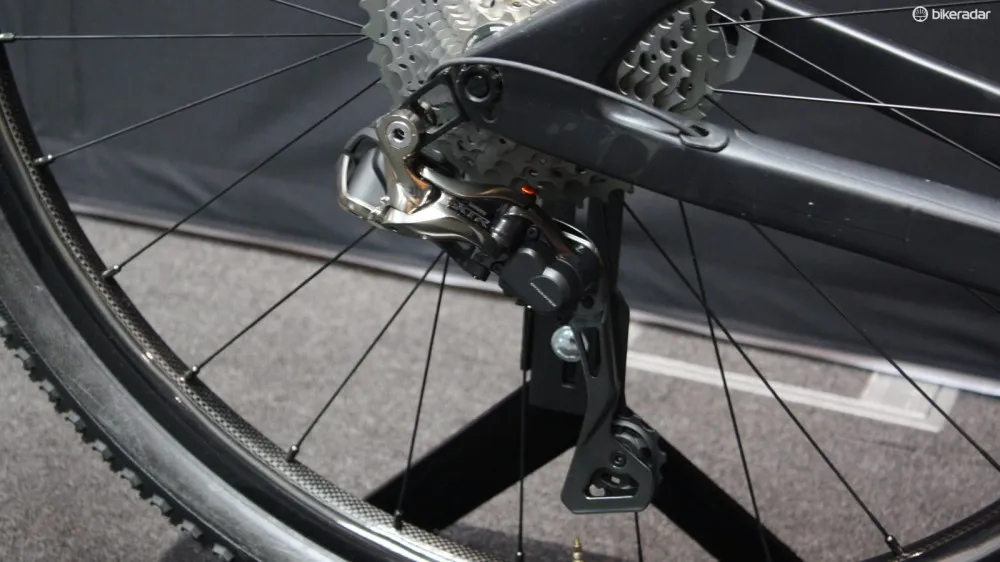
The new M9050 rear derailleur does a great job of hiding away its motor, which is 50 percent more powerful than the one you’ll find in Shimano’s road Di2 derailleurs. That’s to combat the additional weight that muddy conditions can add to the components.
Just like its mechanical brother, the RD-M9050 has Shimano’s
clutch retention system. This means a rider can externally adjust the spring tension of the rear derailleur using an Allen key. The beauty of this is that with a motor controlling the shift, the tension at the clutch can be turned up to a level that would normally compromise shift performance for a mechanical derailleur.
Just like on the road system, in case of a large impact or crash on the derailleur it will internally separate the motor. It does this to protect the components and force the rider to check the derailleur hanger alignment following the impact (instead of later accidentally shifting into the spokes). If everything is OK, the derailleur can be reset at the handlebar system display by holding down a button.
The derailleur will be available in a short- and long-cage option, with the former weighing a claimed 289g.
FD-M9050 front derailleur

The XTR Di2 front derailleur is less subtle than its rear counterpart. It has a claimed weight of 115g and features the same auto trimming technology as the company’s Di2 road components. Both double and triple ring options will be available, which aren't cross-compatible.
SW-M9050 shifters

Thanks to Syncro Shift functionality, XTR Di2 can be set up to run with either one or two shifters at the handlebar, even with a triple crank. The shifter isn’t really a shifter, it’s simply a switch that's been given a short yet positive throw to try to replicate the feel of a conventional unit. The claimed weight is 64g per unit and features adjustable reach.
SC-M9050 system display
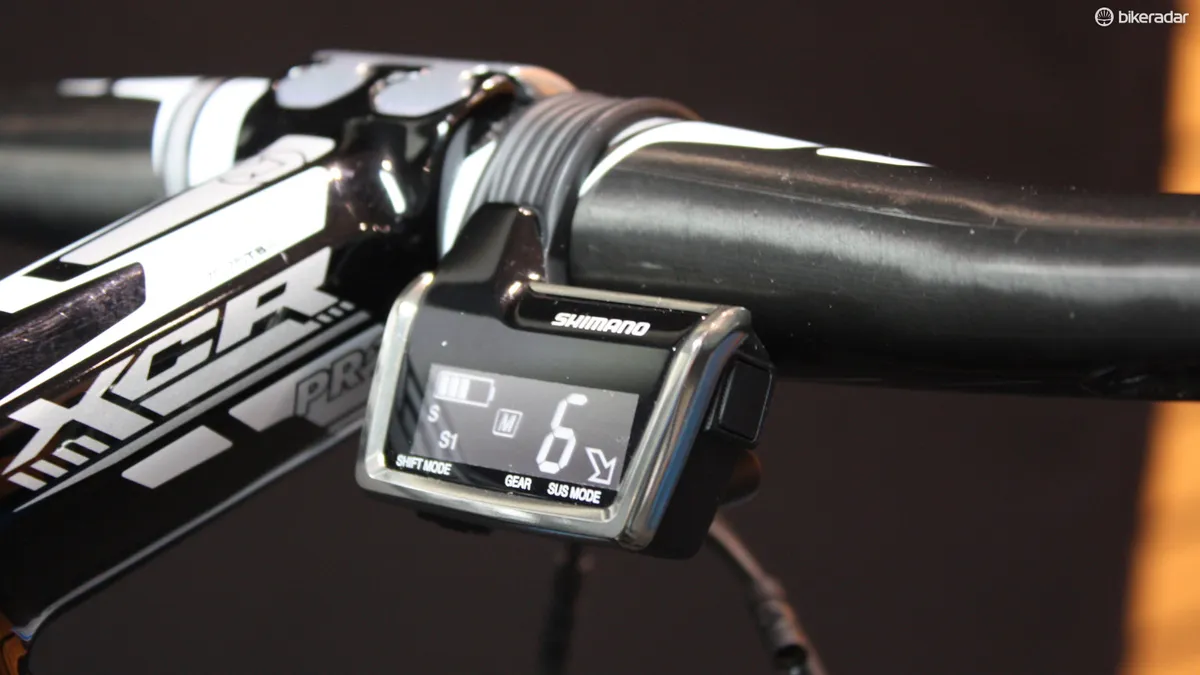
The brain of this groupset is a small handlebar mounted LCD display. While riding, the display communicates essential information such as battery level, gear position and shift mode (whether or not Synchro Shift is activated). It's integrated with Fox’s electric iCD suspension adjustment system – where the bottom right of the display includes an element which shows the suspension mode of a compatible fork and shock. It certainly leaves the door open for nerdy types and perhaps other manufacturers to exploit in the future.
The display also functions as a charging point for the system and a connection to Shimano’s E-tube software, where – just like in Shimano’s road applications – riders can customise a wide range of functions.
Battery and wiring
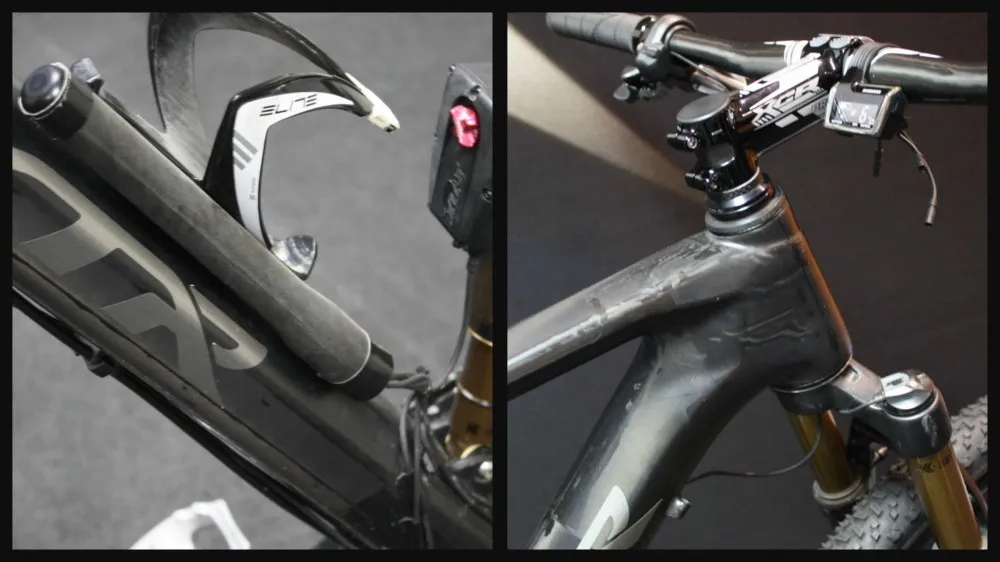
Bottle cage mount will not be the only option (L) – notice the wires emerging from the head tube (R)
The battery unit as well as the wiring for XTR Di2 are identical components to the ones used in Shimano's electronic road groups. The battery can be mounted on a bottle cage, in a seat tube, frame and can even be contained within the steerer unit of certain forks (via the use of PRO's new Tharsis components).
Shimano states a worst case scenario for battery life of just under 300km, this is with constant shifting of both front and rear derailleurs in harsh conditions along with the use of FOX front and rear iCTD suspension. While we don't expect battery life to be the same as the possible thousands of kilometers on the road, most users of the XTR Di2 will likely get weeks between charges.
If you happen to run out of battery juice while riding, the system is designed to shut down the least important components to save battery. This will start with the rear suspension followed by the front, then moving onto the front shifting and finally cutting out the rear shifting.
Weights
The table below shows that in particular setups, the Di2 has potential to be lighter than mechanical. Both electronic systems are quoted with internal routing. Please note, these weights may change for production versions.
XTR Di2 M9070 2x11 (synchro right only)
XTR Di2 M9070 2x11 (Right and left shifting)
XTR M9000 2x11 XC (mechanical)
Shifters
56.8g
113.6g
203.6g
Rear Derailleur (mid cage)
270g
270g
226g
Front Derailleur
131.6g
131.6g
108g
Battery (BMR)
51g
51g
0g
Cable
40g
40g
90g
Junction A (SC)
29.5g
29.5g
0g
Juntion B
4.2g
4.2g
0g
Crankset
607.3g
607.3g
607.3g
Bottom Bracket
57.1g
57.1g
57.1g
Cassette
318g
318g
318g
Chain
245.8g
245.8g
245.8g
Total
1811.2g
1868g
1855.4g
ArrayPricing
Di2 technology has, just like it did for the first generation in the world of road, debuted at the top-end of Shimano's mountain biking range. The pricing alone is likely to keep these parts out of the hands of anyone other than Shimano-sponsored athletes and the very wealthy.
- Rear derailleur — £429 / US$650 RDM9050GS (short cage) and RD9050SGS (long cage)
- Front derailleur — £269 / US$425 FDM9050
- Right shifter — £149 / US$250 SWM9050R
- Left shifter – £149 / US$250 SWM9050L
Read about BikeRadar's first ride impressions on XTR Di2 here.


